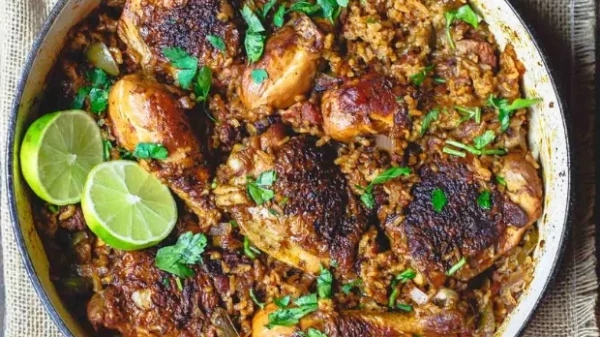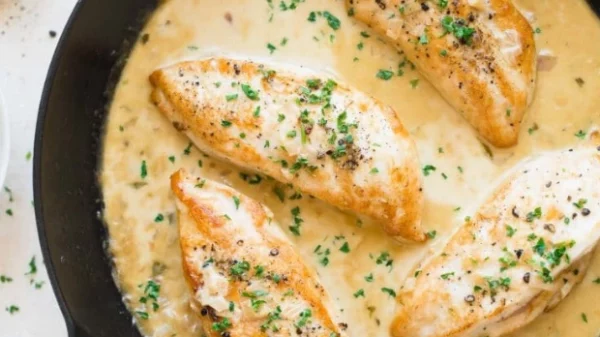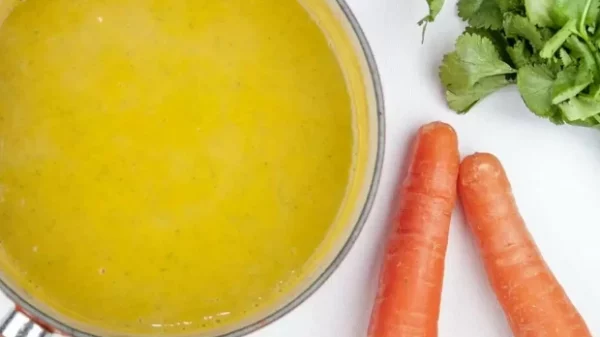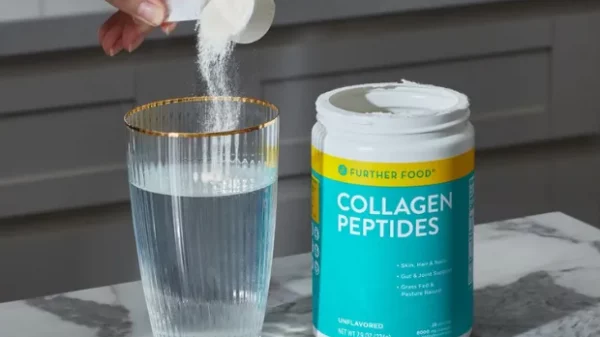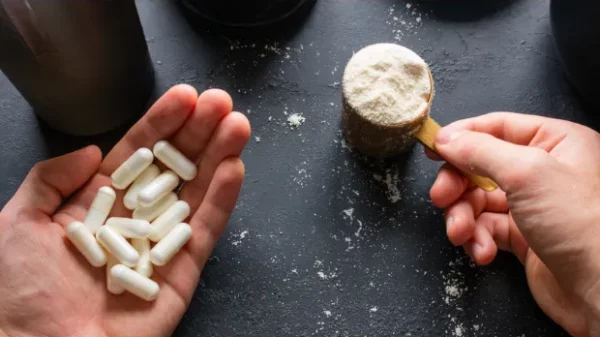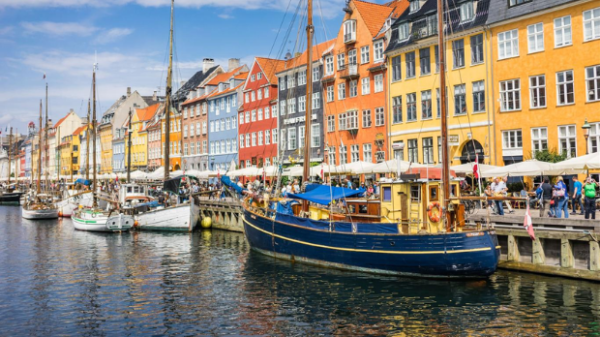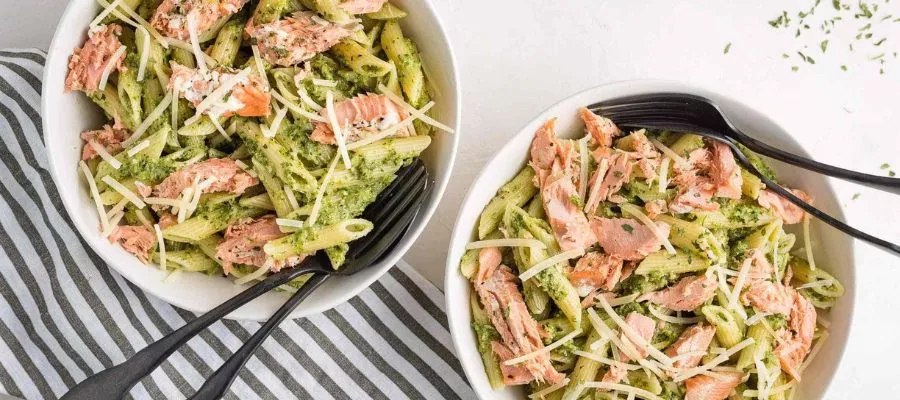
Salmon Pesto Pasta | Hermagic
Salmon pesto pasta is a mouthwatering dish that combines the rich flavors of salmon and the vibrant taste of pesto sauce. The combination of tender salmon, al dente pasta, and aromatic pesto creates a delightful culinary experience.
How to prepare Salmon Pesto Pasta?
I. Gathering Ingredients:
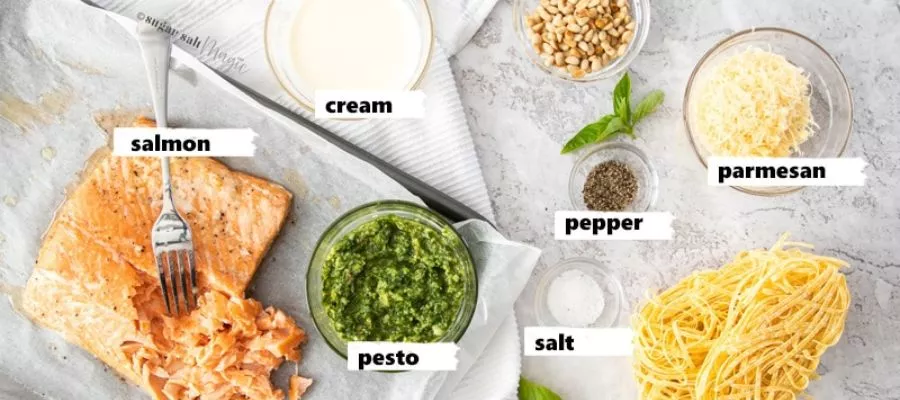
Gathering Ingredients | Hermagic
Before diving into the cooking process, it is essential to gather all the necessary ingredients to ensure a smooth preparation. For the salmon with pasta and pesto, you will need the following ingredients:
Salmon fillets: Fresh or frozen salmon fillets, preferably skinless and boneless, about 1 pound.
Pasta: Choose your preferred pasta type, such as penne, fusilli, or spaghetti.
Pesto sauce: Either store-bought or homemade pesto sauce.
Garlic: 2-3 cloves, minced.
Olive oil: Virgin olive oil is used in the kitchen.
Lemon juice: Freshly squeezed lemon juice for a tangy flavor.
Salt and pepper: To season the salmon and pasta.
Parmesan cheese: Grated Parmesan cheese for garnishing.
Fresh basil leaves: Optional, for additional garnish.
Also Read: What Are the Health Benefits of Apple Cider Vinegar?
II. Preparing the Salmon:
Season the salmon: Sprinkle salt and pepper evenly on both sides of the salmon fillets. This step enhances the flavor of the fish.
Cooking the salmon: Heat a skillet over medium-high heat and add a drizzle of olive oil. Place the seasoned salmon fillets in the skillet, skin side down, and cook for about 3-4 minutes per side, or until the fish flakes easily with a fork. Remove from heat and set aside.
III. Cooking the Pasta:
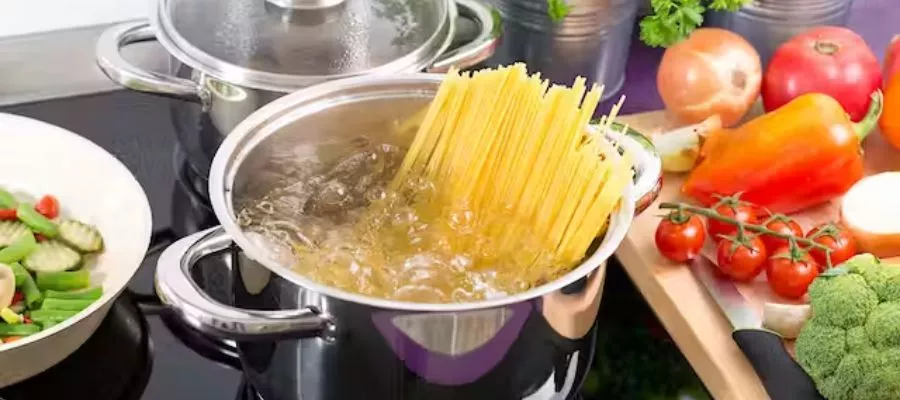
Cooking the Pasta | Hermagic
Boiling the water: Bring a large pot of salted water to a rolling boil.
Cooking the pasta: Add the pasta to the boiling water and cook according to the package instructions until al dente. Stir occasionally to prevent sticking. Once cooked, drain the pasta, reserving a small amount of the cooking water.
IV. Preparing the Pesto Sauce:
Pesto sauce selection: If using store-bought pesto, follow the instructions on the jar. For homemade pesto, combine fresh basil leaves, garlic, pine nuts, Parmesan cheese, olive oil, and a squeeze of lemon juice in a food processor. To get a smooth mixture, blend it for a while.
Combining the pesto and pasta: In a large bowl, mix the cooked pasta with the desired amount of pesto sauce, ensuring all the pasta is evenly coated. If the sauce seems too thick, you can thin it up with some of the cooking water you saved.
Also Read: Nourishing Wellness: Unveiling Organic Almond Butter By iHerb
V. Assembling the Dish:
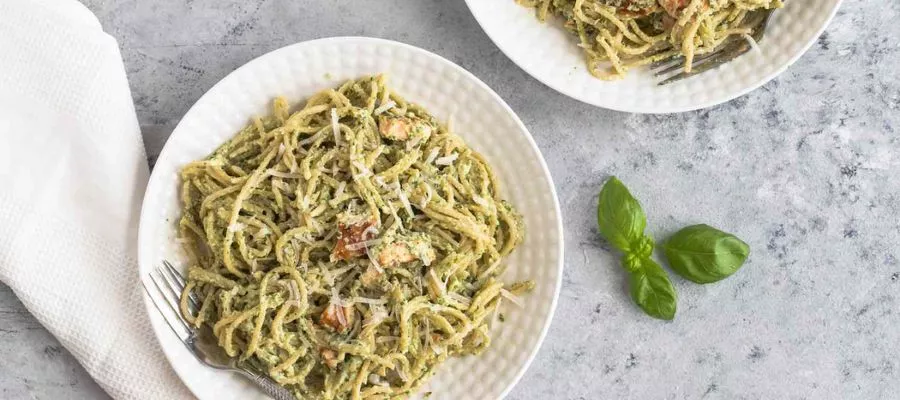
Assembling the Dish | Hermagic
Flaking the salmon: Use a fork to flake the cooked salmon into bite-sized pieces.
Combining the salmon and pasta: Gently fold the flaked salmon into the pesto-coated pasta, ensuring the salmon is evenly distributed throughout.
Final touches: Taste the dish and adjust the seasoning if necessary. Sprinkle grated Parmesan cheese over the pasta for an extra layer of flavor. For a fresh touch, garnish with a few basil leaves.
VI. Serving and Enjoying:
Divide the salmon pesto pasta into individual serving bowls or plates. You can serve this dish hot or at room temperature. Add a salad and some garlic bread and you’ve got yourself a full supper. Enjoy the flavorful combination of tender salmon, aromatic pesto, and perfectly cooked pasta.
Also Read: Vitamin C Supplements: The Benefits and the Best Brands
Health Benefits of Salmon Pesto Pasta
I. Salmon: A Nutrient Powerhouse
Salmon, the star ingredient of this dish, is widely regarded as a nutritious fish with various health-promoting properties. Rich in omega-3 fatty acids, salmon contributes to heart health, reduces inflammation, and supports brain function. Additionally, it serves as an excellent source of high-quality protein, essential for tissue repair and growth. The inclusion of salmon in the pasta enhances its nutritional profile, making it an excellent choice for a well-rounded meal.
II. Pesto Sauce: A Burst of Flavor and Health Benefits
Pesto sauce, made primarily from fresh basil leaves, olive oil, garlic, pine nuts, and Parmesan cheese, not only adds vibrant taste to the dish but also offers several health benefits. Basil, the primary herb in pesto, contains antioxidants and phytochemicals that promote a healthy immune system and help fight inflammation.
Olive oil, a key ingredient in pesto, provides heart-healthy monounsaturated fats, while garlic possesses antimicrobial and anti-inflammatory properties. The combination of these ingredients creates a delicious sauce that enhances both the taste and nutritional value of salmon pesto pasta.
III. Pasta: A Versatile Energy Source
Pasta, the base of this dish, serves as an energy-rich component. It is a significant source of complex carbohydrates, which provide a sustained release of energy, aiding in maintaining blood sugar levels and supporting physical activity.
Whole grain pasta options can also offer added fiber, contributing to digestive health and promoting satiety. While portion control is crucial, incorporating pasta into a balanced diet, as demonstrated in salmon pesto pasta, can be part of a healthy and satisfying meal.
IV. Other Nutrient-Rich Ingredients
Apart from the key ingredients mentioned above, salmon pesto pasta can be customized with additional nutritious ingredients. The inclusion of vegetables such as cherry tomatoes, spinach, or roasted bell peppers adds vitamins, minerals, and dietary fiber to the dish, elevating its nutritional content. These colorful and flavorful additions enhance the overall nutritional value and visual appeal of the meal.
Also Read: A Guidе To Multivitamin For Women: Bеnеfits And Thе Bеst Choicеs
Conclusion
Salmon pesto pasta offers a delightful combination of flavors while providing a host of essential nutrients. The inclusion of salmon contributes omega-3 fatty acids and high-quality protein, promoting heart health and overall well-being. Pesto sauce, with its fresh herbs, healthy fats, and immune-boosting properties, further enriches the dish. The pasta acts as an energy source and can be chosen wisely to optimize nutritional benefits. For more information, visit Gousto and Hermagic.
FAQ’s





















